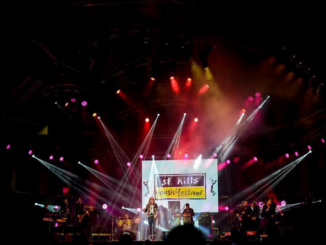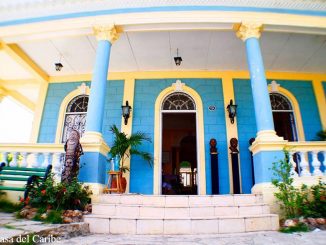
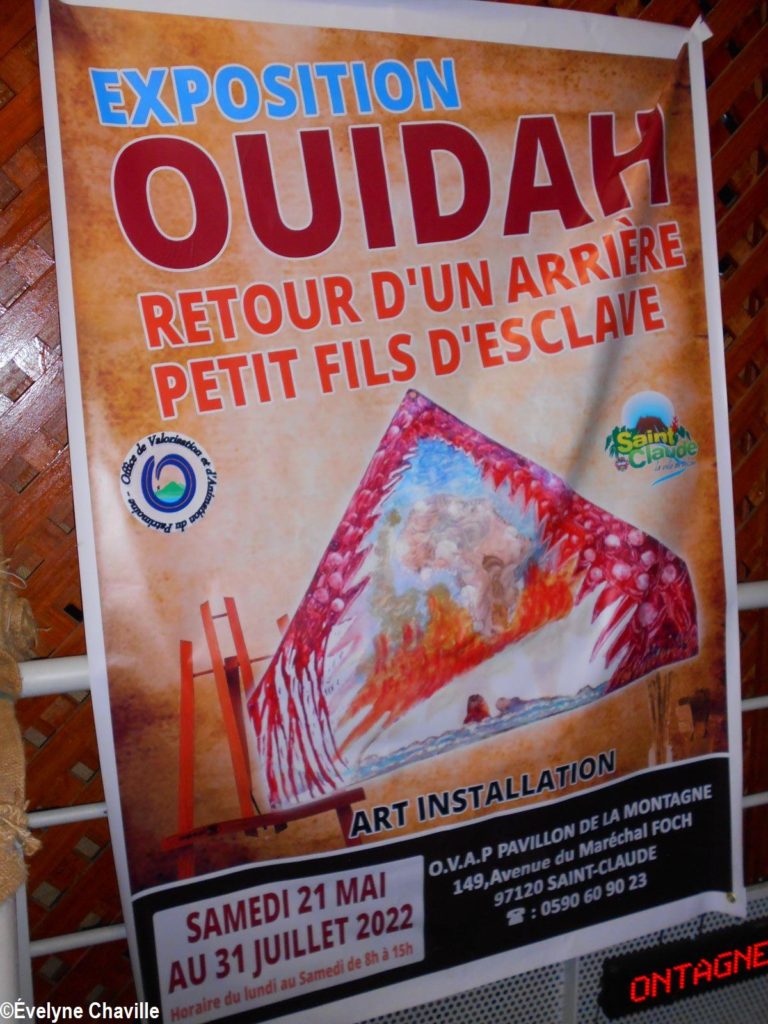
From May 21 to July 31, 2022, the Pavillon de la Montagne in the town of Saint-Claude hosts a large and rich exhibition entitled “Ouidah, Retour d’un arrière-grandfils d’esclave”. Until now, no one in Guadeloupe has reported such instructive testimony on the slave trade. Nine years after a trip to Togo where he found the family of his ancestor, a slave in Sainte-Rose, then in Benin, the plastic artist Jipé Fronton decided to tell his return to the lands of the kings of Dahomey. The artist is also preparing a book on this trip.
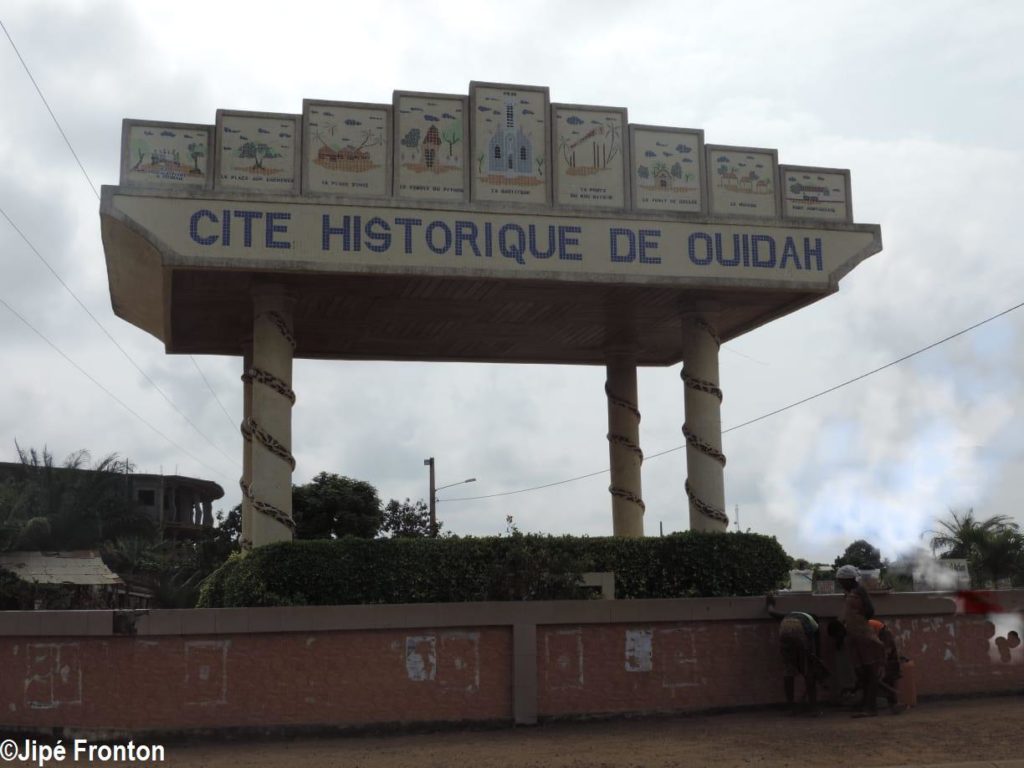
Kariculture : This exhibition entitled “Ouidah, return of a great-grandson of a slave” is based on a trip to Africa and it’s you, the great-grandson of a slave, is that right?
Jipé Fronton : Yes, I made a trip in 2013 to Togo and as Benin is nearby, I went there. My wife is Togolese, her parents are descendants of kings. I had the opportunity to find my ancestors : when I left Guadeloupe, I knew that there was a Zoé Fronton who was a slave in Sainte-Rose but I didn’t have the connection with Africa. When I got there, I went to see the king of a village called Glidji near the town of Aneho, I told him about it and he told me that he was going to do some research. I stayed there for a month. During his research, he found this Zoé who had left as a slave, she lived in a village called Zowla in Togo, I went to this village, I met my cousins, my family and I was introduced as their big brother, I even went to the ritual etc. From there, we were invited to Benin by a friend of my wife’s family who is Beninese, he told me : “you must go to Ouidah” (…).
Kariculture : When we are told about slavery, we are not told about Ouidah, we are told about Gorée…
J. F. : Yes, he gave me his driver and a historian, Nasser Béni and we went to Ouidah. In fact, for my return to Africa, I was like a “king”. There were two ways to go to Ouidah : through the lands where there are rivers or along the coast so by sea. I told myself that if I had to do the slave route again, I would go in the opposite direction, so we left by the sea, we were dropped off near the beach, at the Door of No Return and I made the whole trip to go back up to Chacha Square. This house that we see on this photo is that of Francisco Felix de Souza, a Brazilian ; at the beginning, King Guézo had said to him : “Here, I give you a concession and all this land of Ouidah belongs to you”.
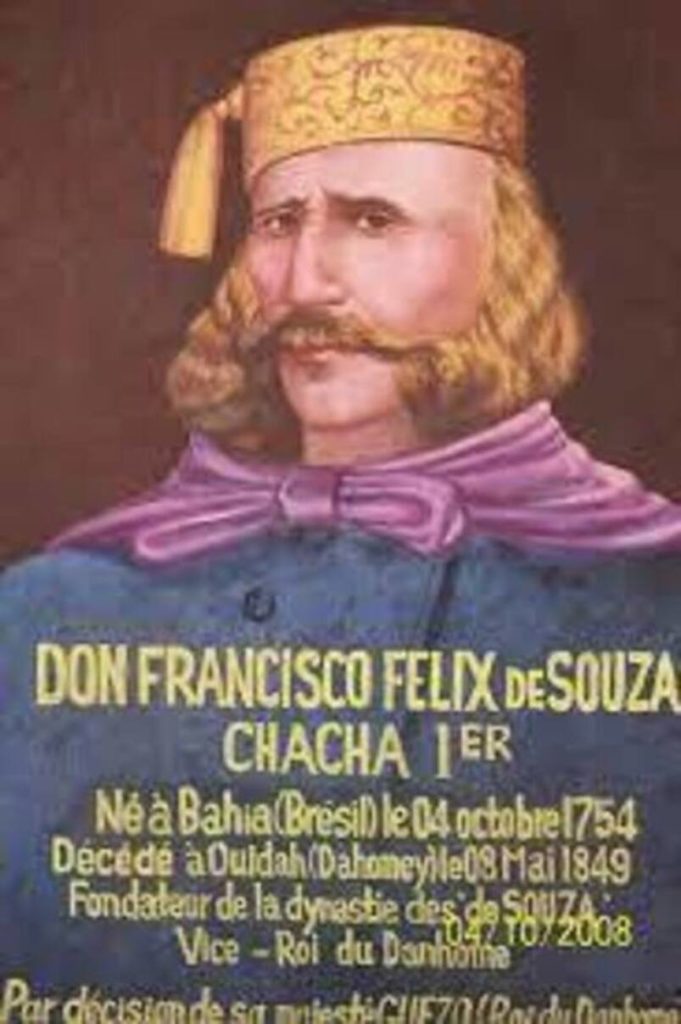
Kariculture : We can see on the photo that he was born in Bahia in 1754 and died in Ouidah in 1849…
J. F. : This man made children with slaves, because he “loved” them but he sold them.
Kariculture : He loved them so much that he sold them…
J. F. : In front of his house, he made a square where he sold slaves to the French, Dutch, Danish, Portuguese, English… All of them had warehouses for the “merchandise”. He gave this auction site the name of “Chacha” because in Beninese, “Chacha” means “Everything goes fast”, we sold quickly (…).
Kariculture : In this photo, is this house really his?
J. F. : This house is his house, it’s still there, there are people, great-grandchildren who live there ; there is even a whole village called Souza and there are many people called Souza. When you get to the second floor of this house, there’s his coffin, he’s buried in his house.
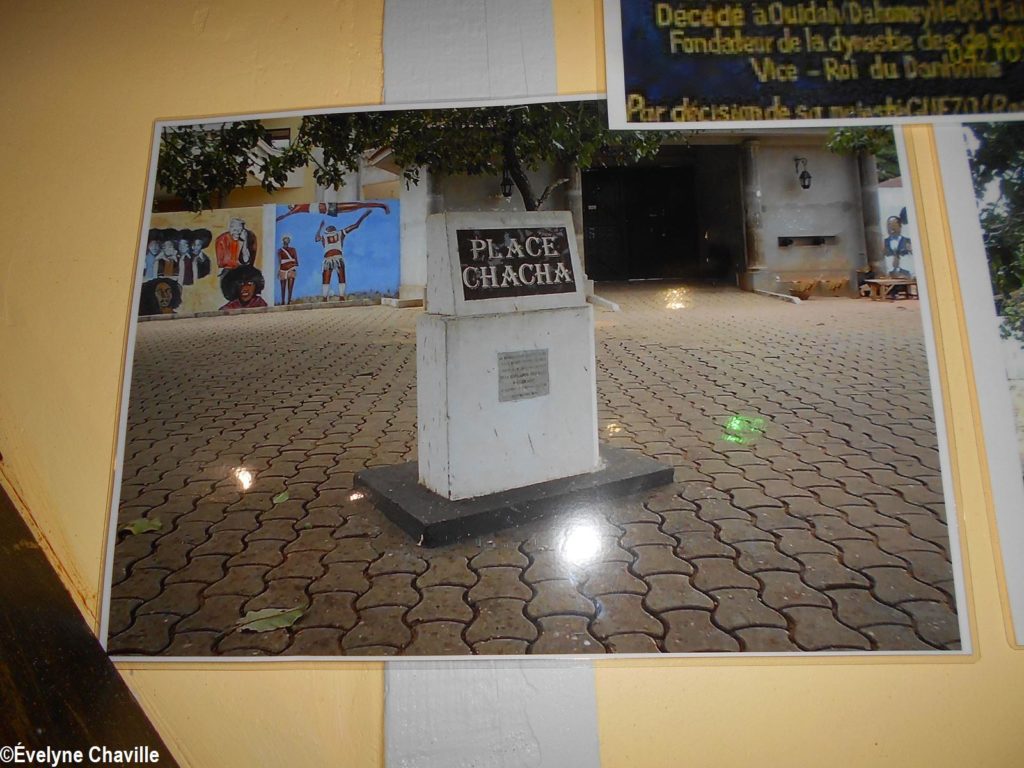
Kariculture : Did you find out how many people this merchant had sold?
J. F. : We’ll say many, many, many…
There were French, English and other warehouses that were slave parking lots. Next to it was the Catholic Church because the missionaries said to themselves: “we are going to confess the blacks to make them religion”, but at the beginning it was voodoo ; I was always told that it was something bad, but no, it’s their religion, there is good and evil as there is good and evil in Christianity. Here I am in the Temple of the Pythons…
Kariculture : And you are playing with snakes, weren’t you afraid?
J. F. : I was playing with a snake and I was not afraid. Do you know why? It was Béni, the historian, who told me : “You have to go in there because I feel that you have ancestors here”.
Kariculture : Did he go in there? (laughs)
J. F. : Oh no, he didn’t come in! He went into the courtyard with me. He said, “Come in, if you have an ascendant, the snake won’t do anything to you”. I went in, I was afraid, at first ; my wife was there. I touched a snake, I saw that it did not move, I even put it around my neck (…) Here, through this installation, I wanted to represent all this symbolic part.
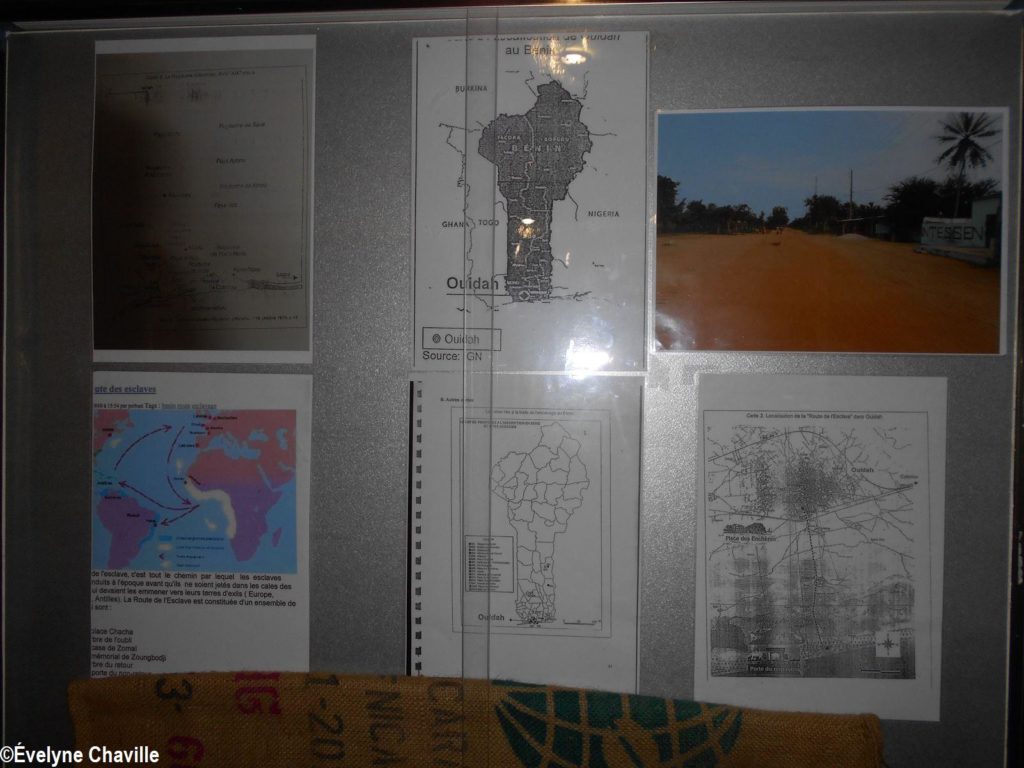
Kariculture : How did the “captives” get to Ouidah and its famous Chacha Square?
J. F. : Ouidah is located here in Benin. The slaves came from all the border countries (Nigeria, Ghana, Burkina Faso, Niger) and arrived at this Chacha Square. After this square, they crossed a whole village to go to the sea ; I made a straight line but at the time they passed through lagoons, swamps, there were animals like lions, crocodiles etc. To reach the sea, it was necessary to travel 3156 kilometers, the “herd” of slaves had to travel 130 kilometers per day, drinking water every 130 kilometers.
Kariculture : And those who couldn’t?
J. P. : They died, they were left on the ground, those who could, “so much the better” in quotation marks.
All these paintings were done before my trip, in 2003, I didn’t even know that I would have gone there, that I would have met my wife, I met her in 2006, we went to Ouidah in 2013.
On the road I took from the square, the first statue is a bird with a fish in its beak which means : “the kingdom is great and the kingdom will never be defeated”. The fish symbolizes the attacker.
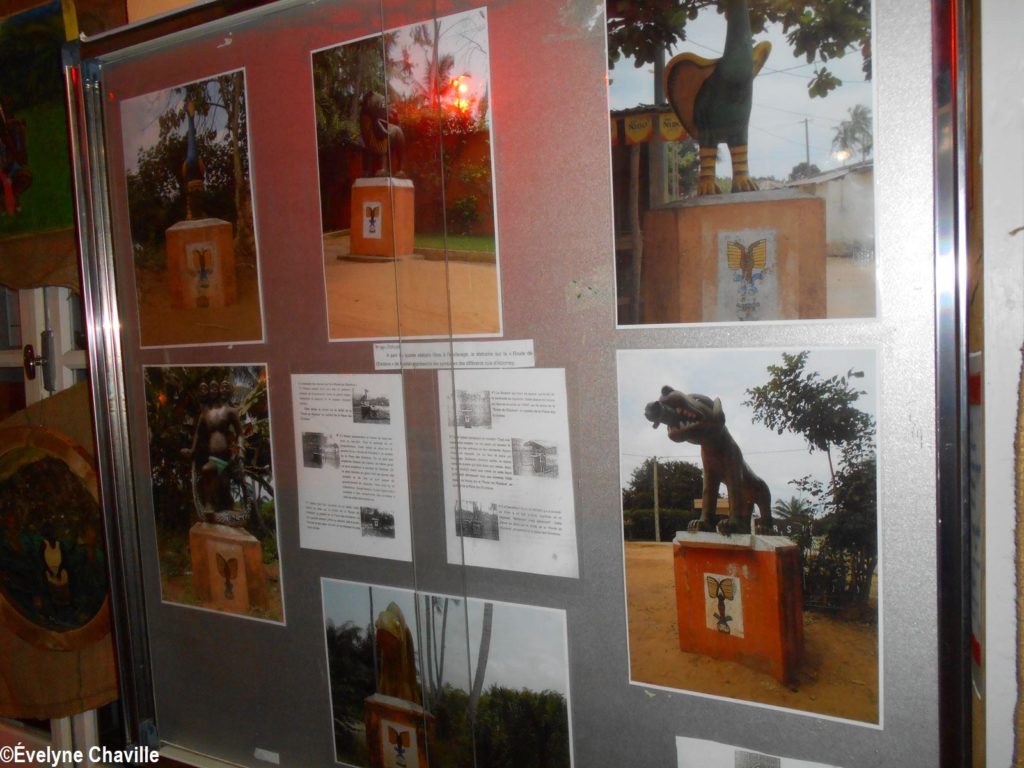
Kariculture : There is a whole collection of statues along this road, when were they made?
J. F. : The statues related to slavery were made by the various kings of Abomey, but they had been destroyed, so UNESCO had them redone by artists. When we get here, there is the lion with its mouth open and its claws out, which means: “The kingdom fears nothing”, the king is there to protect them. Here is the hyena vomiting a sheep, it is pictured : King Agadja (1711-1740) had animals and among them, some were dying and he wanted to understand why. So he gathered all these animals and one of them cried out and the king said
: “the one who cried out was the one who ate all the others”. From this deduction, he said to himself : “In my palace, I will know now who betrays me by giving him something to drink”. And then, there is the statue of the bird and the tamtam, that means : “the tamtam will always resound”; the king said that “you cannot forbid a brother to speak about what is wrong in the kingdom”; the tamtam symbolizes the tongue that speaks, the word. Here, it’s another statue, with a severed leg and a broom ; it means that “the kingdom has stumbled but it has not fallen, and with the broom we will be able to sweep away the attackers”.
Kariculture : Did the historian who accompanied you, Nasser Béni, explain all this to you?
J. F. : Yes, he explained all that to me. All these statues are along the road. There have been various kings and each king has made his mark. It should also be noted that at the time Ouidah was called Houéda, that’s the real name. The French when they arrived could not say Houéda and they called it Ouidah (…).
Here, it is the Tree of Forgetfulness, I represented it like this. Men had to turn around this tree 9 times, women 7 times because the woman if she had had nine ribs could not have given birth. This disoriented them, they did not know where they were…
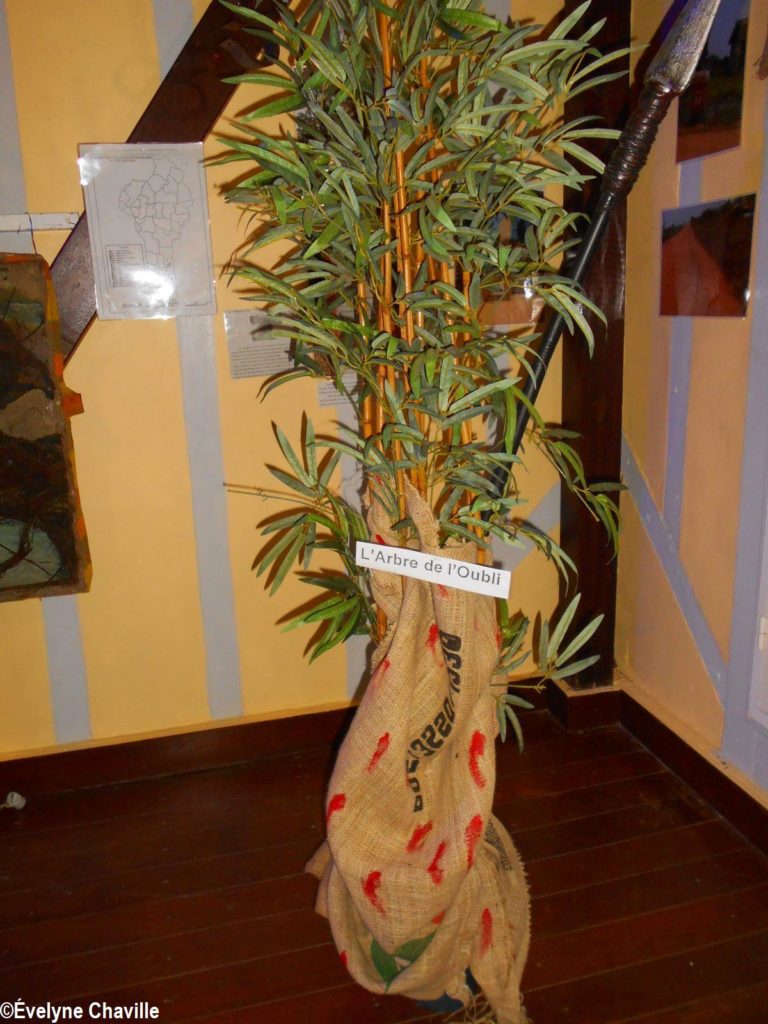
Kariculture : You even talk about culture regarding this Tree of Forgetfulness, it’s written: “they were supposed to become amnesic, they completely forgot their past, their origin and their cultural identity to become beings without any will to react and rebel”.
When you saw all this, what state were you in?
J. F. : Wow, look at that still gives me chills. When I started to walk on Chacha Square, I felt like the ancestors were there. On this road, you don’t see so many cars passing by, there are people living there but the villages are a bit away from the road, they’re not on the trail. At the time, there were several trails to go to the beach, King Agadja asked one of his subjects to go and measure the route taken by these slaves, and when he gave him the distance, the king said : “we stop this trade, we don’t sell anymore”. Because it should be known that at the beginning, Chacha I, the Brazilian de Souza, was going to capture people in the border countries and he told the kings that they were going to learn beautiful jobs in the New World and they were going to come back. But de Souza did not say that they were going there as slaves.
Kariculture : In any case, they left unwittingly…
J. F. : They left unwittingly. At first, some kings said, for example : “I give you ten people (they were not yet slaves), you give me some shells”. The deal was done and these people left. When the Europeans saw that the kings no longer gave them “people”, they went to attack villages where they took queens, princesses and they brought back as slaves. It was a big deportation (…) After the Tree of Forgetfulness, they arrived in the Hut of Zoumaï, which means : the light does not go there. It was a large, hermetically sealed hut.
Kariculture : Can tourists like you who arrive there enter this hut?
J. F. : No, it’s a monument and it’s closed (…) Once the captives went in, they didn’t come out anymore, they were docile, they lost their faculties, many died.
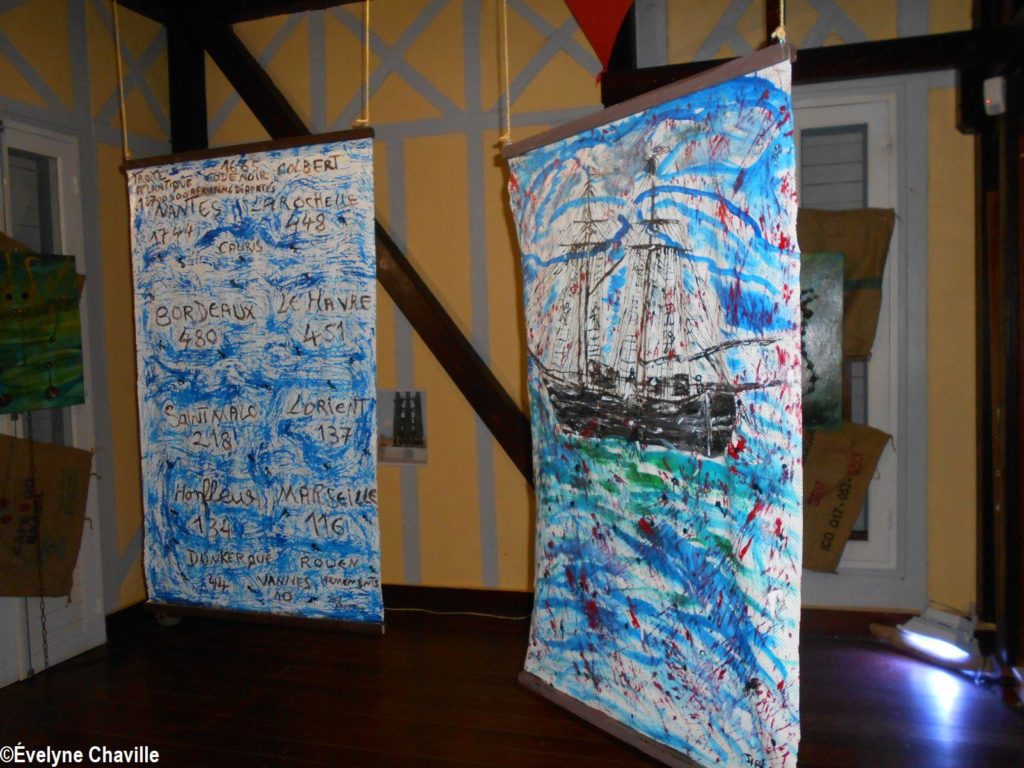
Kariculture : How long did they stay in there?
J. F. : It depends, it was only when the boat arrived they got out of there. They were taken out but some died and were put in a mass grave next to it. We are in the village of Zoungbodji.
Here is the statue of the Sorcerer because he always accompanied the captives, that was part of the customs. Voodoo is everywhere, so the sorcerer was also there to guide their steps and pass into the other world. Then, the pirogues were waiting for them to take them to the slave ship.
Kariculture : Here, is it the Tree of Return?
J. F. : It is a kola tree, symbolizing the return of the slaves. It is a bit metaphysical, but at the same time it is mystical because the slave who went into exile will never go back there, only his spirit can return. However, the great-grandchildren, one day, will come back. As I did.
Kariculture : In front of this tree, what were you asked to do?
J. F. : I was told to make three turns so that my ancestors would know that I had returned.
Kariculture : How did you feel afterwards?
J. F. : In the same state of mind as at the beginning : I felt that the ancestors were there with me. However, when I arrived at the Door of No Return, after having taken all this knowledge, I felt relieved, I felt that a part of me was freed.
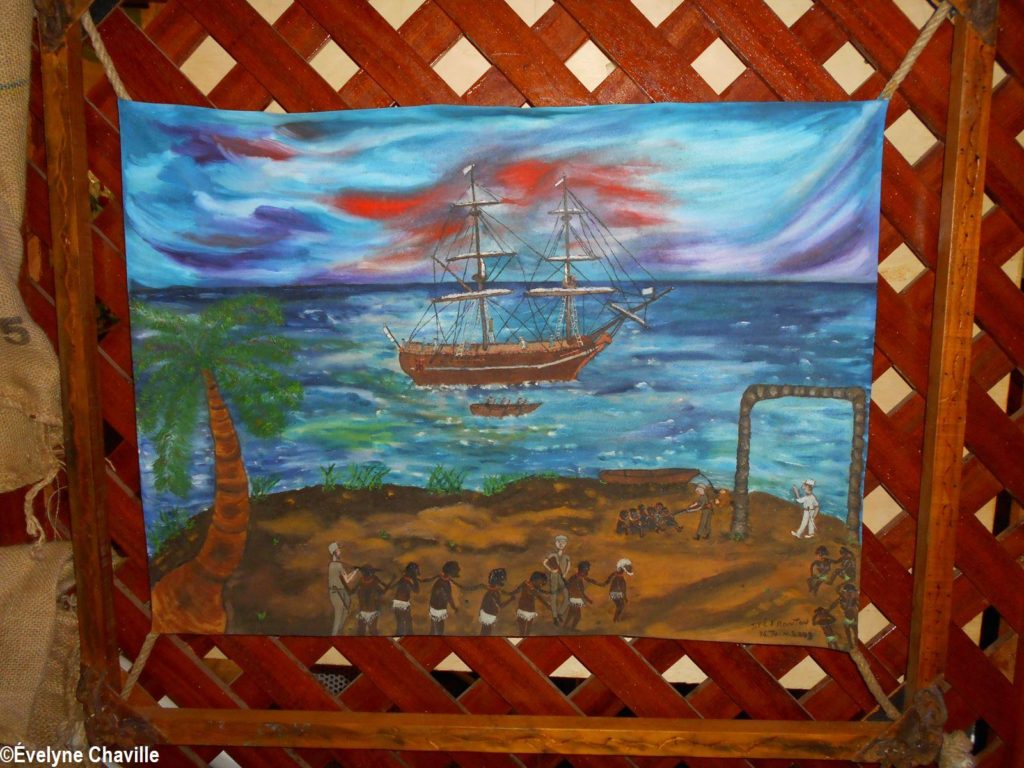
Kariculture : The kings were partly responsible for what happened, did you feel compassion, regret in the people you met?
J. F. : Yes, in the village chief : he told the story of the tree and said that he was happy to see that a great-grandson and son of a slave came around the tree and talked with them. This did me much good too.
Kariculture : Don’t they feel a little “guilty” about what their ancestors did?
J. F. : No, no! Why? Because for them de Souza sold the blacks but there are many who succeeded, there were deaths but there are those who became drivers etc.
Kariculture : Is that how they see it?
J. F. : They see it that way and until now there are people called de Souza everywhere…
Kariculture : For them, de Souza was a benefactor?
J. F. : For them, he is a benefactor because, for the king, these captives were not sold, de Souza did not tell them everything…
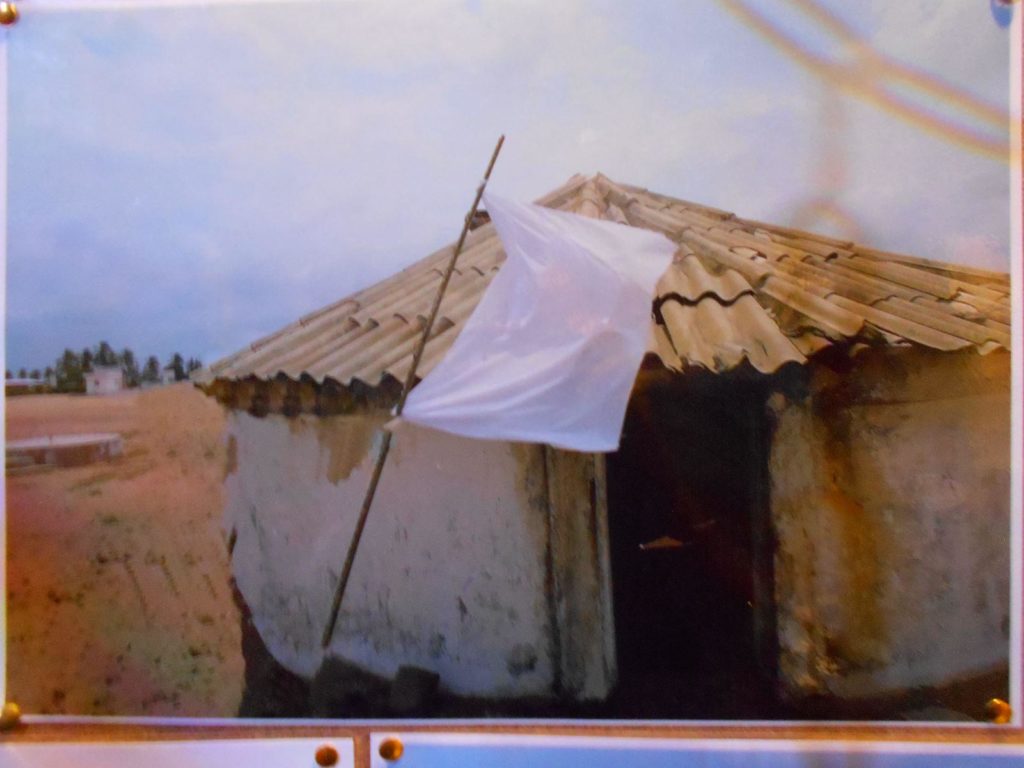
Kariculture : Here in this photo, this is the trading post ?
J. F. : There were several trading posts : French, Dutch, Portuguese, etc. This is where people were marked with hot iron after they had to cross the beach to take the big boat, but before that, they went to the Sorcerer’s Hut. You have to bend down to enter there, to show yourself “small” in front of the sorcerer… They went out through another door leading onto the sea and the pirogues were there and waiting for them (…) It should be noted that this trading post was destroyed – the doors were burned, inside there are bullet holes, etc. – by King Guézo when he knew what was being done to the people of his kingdom. He stopped all that… But the French and other Europeans came back to the king to ask him to let them continue the trade and the king said no. For his part, de Souza did not want to stop, he had two ships that had to come and pick up the “merchandise”, one of the ships did not arrive, the other one could not take anyone. De Souza did not see the end of slavery (…).
Kariculture : It has been 9 years since you went there, why are you doing this exhibition now?
J. F. : I was not yet ready to tell the story, I had not found the right place.
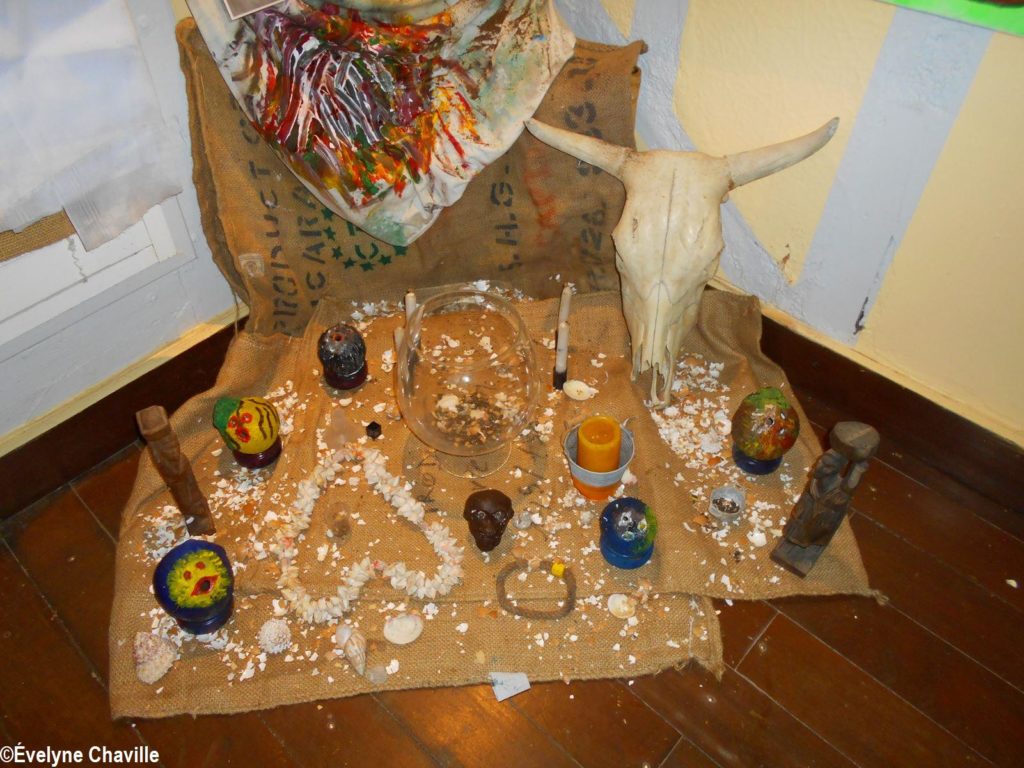
Kariculture : There are many things in this exhibition: paintings, photos, sculptures, installations, video etc. How long did it take you to organize everything?
J. F. : One week. I wanted to redo the route so that the visitors feel the heaviness, that they feel that the slaves, our ancestors, are there. Three of us, Jérôme, my son, Émile, a friend and myself, set up the exhibition. I imagined the jute bags, there are 200. I didn’t count the number of paintings or the number of photos…
Kariculture : How long did it take you to make all these pictures?
J. F. : My wife’s family friend lives 30 or 40 km from Ouidah. We went there by car and I was in the back seat so I was able to take many pictures. On the way back, I started walking from Chacha Square but only for 3 kms, I stopped, asked questions to Nasser, the historian, and made photos again. Then, we finished by car up to the Door of No Return. On this huge beach there was a trading post shared by the different nationalities…
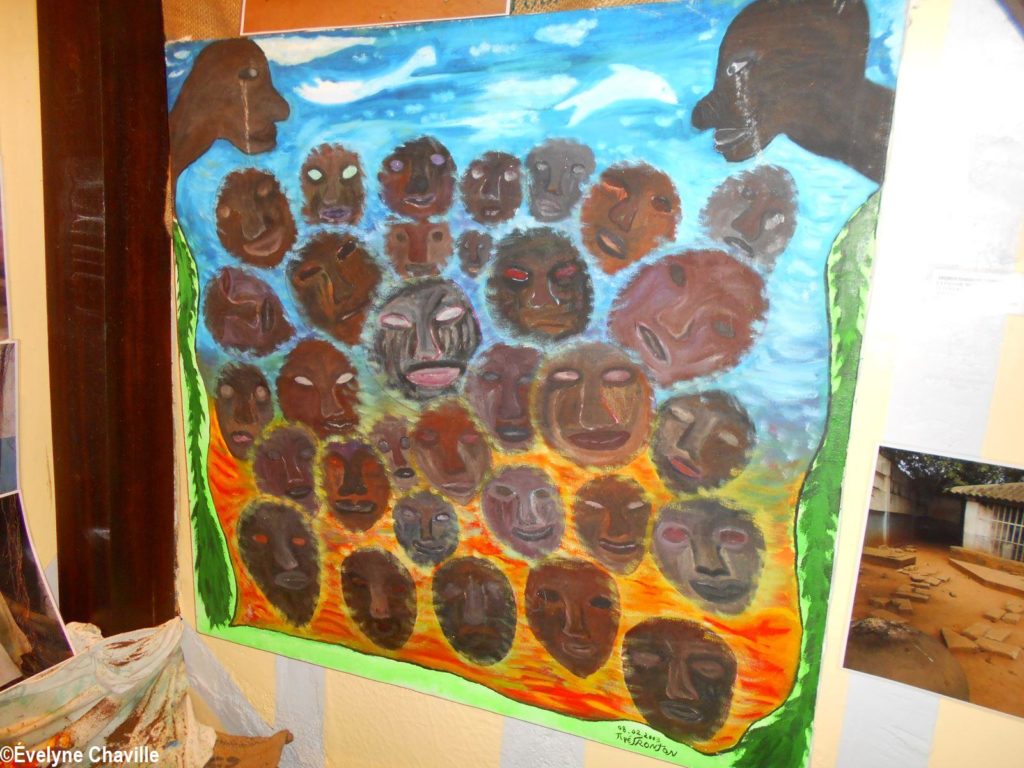
Kariculture : When I look at these pictures, I have the feeling it’s a deserted place, it’s striking…
J. F. : It’s true that it’s deserted, but when you get to the entrance, there’s a craft village. It’s true that on the road, it’s empty, it’s deserted ; there is the village of Zoungbodgi which is a little in withdrawal, there are people who live there but I did not photograph them (…).
Kariculture : Did you see any tourists in Ouidah?
J. F. : When I was there, I didn’t see any tourists. People talk more about Gorée. Here in Ouidah, it’s a “package” of slaves, once the slaves took the boat, they went in transit to Gorée, then they were taken to such and such a place in the New World. In Ouidah, we are at the heart of the slave trade.
Kariculture : Do you advise Guadeloupeans, people in general to go there?
J. F. : Yes, I advise them to go there.
























































